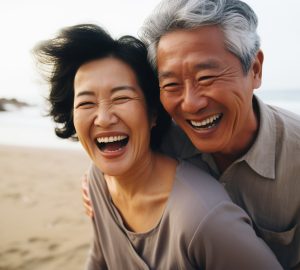Introduction
Dance, a timeless form of expression that knows no age limits, brings boundless joy and energy to people of all generations. In this piece, we delve into the realm of Dance Classes for Older Adults, unveiling the manifold advantages they bring to the physical, mental, emotional, and social aspects of life. Whether your aim is to maintain an active lifestyle, sharpen cognitive faculties, alleviate stress, or forge new connections, Dance Classes for Older Adults offer a truly splendid array of benefits.
The Physical Benefits of Dance
- Flexibility and Balance
Dance, with its graceful movements, beckons us to embrace a wide range of motion. Regularly engaging in dance can yield remarkable enhancements in flexibility and balance, qualities especially vital as we age, as they serve as a potent shield against the perils of falls and associated injuries.
- Cardiovascular Health
Many dance styles, such as the dynamic Zumba, offer an invigorating cardiovascular workout. This vigorous exercise regimen not only safeguards the heart’s health but also mitigates the likelihood of heart-related complications, providing a vibrant foundation for aging gracefully.
- Muscle Strength and Endurance
Dancing calls upon a multitude of muscle groups, nurturing heightened strength and endurance. These newfound physical attributes can translate into a more effortless and enjoyable daily life for older adults, unlocking the potential for greater ease in everyday activities.

The Cognitive Perks of Dancing
- Memory Enhancement
Dancing necessitates the memorization of intricate steps and sequences. This mental gymnastics strengthens cognitive capabilities, ensuring that your mind remains keen and nimble.
- Mental Alertness
In the rhythmic embrace of music and the coordination with fellow dancers, mental alertness is cultivated. It’s akin to a stimulating workout regimen for your brain!
The Emotional Well-being of Dance
- Stress Reduction
Dance is a natural stress reliever. The physical activity releases endorphins, which are your body’s natural mood lifters, helping you combat stress and anxiety.
- Boosting Confidence
Mastering new dance moves and performing them in front of others can boost your self-confidence and self-esteem.
- Social Connections through Dance
Dance classes are excellent places to meet like-minded individuals and form new friendships. The sense of belonging and camaraderie that comes from dancing with others is invaluable.
Choosing the Right Dance Style
Ballroom Dancing
Ballroom dancing is not merely a hobby; it’s an expression of art, passion, and connection. Ballroom dancing has a rich history dating back to the 16th century. Initially developed in European royal courts, it was a way for nobility to showcase their grace and poise. Over the centuries, it evolved into a form of entertainment for the masses, with distinct styles emerging in various cultures.
Line Dancing
A group activity that’s both fun and easy to learn, line dancing is a great way to socialize and stay active. Line dancing has a rich history that dates back centuries. Its origins can be traced to European folk dances and even some African tribal dances. These early forms of line dancing were often used to celebrate special occasions and bring communities together.
The Wild West Influence
In the United States, line dancing became closely associated with the Wild West. Cowboys would gather in saloons and dance halls to perform intricate line dances as a way to relax and socialize. This cowboy influence still resonates in many line dances today, with moves like the “Texas Two-Step” and the “Cowboy Cha-Cha.”
Line Dancing Styles
- Country Line Dancing
Country line dancing is perhaps the most well-known style. It features a mix of country music and dance moves that are easy to learn. Dancers line up in rows and follow a choreographed sequence of steps, creating an impressive visual display.
- Urban Line Dancing
In recent years, urban line dancing has gained popularity. This style incorporates hip-hop, R&B, and pop music into its routines. Urban line dances often have a faster tempo and more complex footwork, making them a great workout for participants.
- Latin Line Dancing
For those who enjoy the spicy rhythms of Latin music, there’s Latin line dancing. This style infuses elements of salsa, merengue, and bachata into line dance routines. It’s a great way to add some sizzle to your dance repertoire.
You Might Also Like to Read:
- Indoor Gardening for the Elderly
- How to Use Video Calling Platforms – Comprehensive Guide for Seniors
- Games for the Elderly: Elevating Cognitive and Emotional Well-being
Zumba
Zumba, created by Alberto “Beto” Perez in the 1990s, is a fitness phenomenon that combines high-energy Latin and international music with easy-to-follow dance moves, making it an exhilarating workout experience. This fusion of fitness and dance has gained a massive following worldwide, with millions of people of all ages and fitness levels participating.
Zumba offers a range of styles to cater to diverse tastes and fitness goals. From Zumba Fitness and Aqua Zumba to Zumba Toning and Zumba Gold for seniors, there’s a style suitable for everyone. Each style incorporates various dance forms, ensuring that you never get bored and continue to challenge your body.
Ballet for Seniors
Ballet is often associated with young and agile dancers gracefully pirouetting across the stage. However, this elegant art form isn’t limited to the youth. In recent years, ballet for seniors has gained popularity as an engaging and beneficial activity.
The Ageless Art of Ballet
- Breaking Stereotypes: Stereotypes have long painted the image of ballet as a discipline suited only for the young. However, today’s seniors are proving that age is no barrier to pursuing this beautiful art form.
- Gentle Beginnings: Ballet for seniors starts with gentle movements and basic techniques, ensuring a comfortable and enjoyable experience for beginners.
The Joy of Self-Expression
- Creative Outlet: Ballet allows seniors to express themselves creatively, fostering a sense of accomplishment.
- Emotional Release: Dancing can be a powerful emotional outlet, helping seniors manage their feelings.
Tap Dancing
Tap dancing has a rich history that spans centuries and continents. It originated from a fusion of African and European dance traditions in the United States during the 19th century. African slaves brought their rhythmic footwork to American soil, which blended with Irish and English step dances. This cultural amalgamation laid the foundation for the tap dancing we know today.
The Basics of Tap Dancing
Tap dancing involves the use of special shoes fitted with metal taps on the soles. Dancers create intricate rhythms and patterns by striking the floor with their feet. The sound produced is the essence of tap dance, making it a unique and auditory dance form.
Styles of Tap
There are various styles of tap dancing, each with its own distinct characteristics:
- Classical Tap: This style focuses on precision and traditional steps, often performed to classical music.
- Rhythm Tap: Rhythm tap prioritizes improvisation and syncopation, allowing dancers to create intricate and spontaneous rhythms.
- Broadway Tap: Seen in musicals and theater productions, Broadway tap combines dance with storytelling and elaborate choreography.
The Evolution of Tap Dancing
- From Vaudeville to Hollywood: Tap dancing gained immense popularity during the Vaudeville era in the early 20th century. Performers like Bill “Bojangles” Robinson and the Nicholas Brothers captivated audiences with their extraordinary talent. As Hollywood embraced tap dance in films, it became a symbol of joy and entertainment during difficult times, like the Great Depression.
- Modern Resurgence: Tap dancing experienced a resurgence in the late 20th century, thanks to influential artists like Gregory Hines and Savion Glover. They brought innovation to the art form, combining traditional techniques with contemporary music and styles.
Starting Your Dance Journey
Finding a Suitable Class
Look for dance classes in your local community or online that cater to older adults. Many studios offer specialized classes for seniors.
What to Wear
Comfort is key. Wear loose-fitting clothing that allows for easy movement and supportive shoes that provide good grip.
Frequency of Classes
The frequency of classes depends on your schedule and fitness goals. Many seniors enjoy attending classes once or twice a week, but you can choose a schedule that suits you.
Overcoming Common Concerns
Age Limitations
There are no age limitations when it comes to dance. It’s never too late to start.
Previous Dance Experience
You don’t need any previous dance experience to join these classes. Instructors are experienced in teaching beginners.
Health Considerations
While dance is generally low-impact, it’s always a good idea to consult with your healthcare provider before starting any new physical activity.
Partner Dances
While partner dances like ballroom are more enjoyable with a partner, many classes rotate partners, ensuring everyone gets a chance to dance.
Conclusion
Dance Classes for Older Adults offer a vibrant path to a healthier, happier life. Embrace the joy of movement, meet new friends, and nurture your physical and mental well-being. Remember, it’s never too late to take that first step onto the dance floor.
Don’t let age hold you back; dance your way to a better you with Dance Classes for Older Adults!
Frequently Asked Questions (FAQs)
Do I need previous dance experience?
Not at all. Most classes welcome beginners with open arms. Instructors will guide you through the steps, ensuring you feel comfortable and confident.
Are there any health considerations?
It’s always wise to consult with your healthcare provider before starting any new physical activity. However, dance is generally low-impact and suitable for seniors.
What should I wear to a dance class?
Comfort is key. Wear loose-fitting clothing that allows for easy movement and supportive shoes that provide good grip.
How often should I attend classes?
The frequency depends on your schedule and fitness goals. Many seniors enjoy attending classes once or twice a week, but you can choose a schedule that suits you.









3 Comments